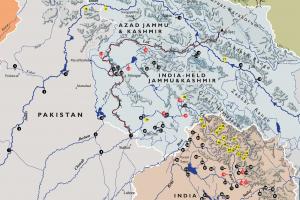Importance and Applications of Civil Engineering

Importance and applications of civil engineering
Civil engineers are becoming more and more important with time. Now, they are also responsible for looking after the fire control systems and installing quick fire exit points in the buildings they design. This will help in minimizing the loss of life during fire accidents. Civil engineering is one of the oldest of the engineering professions. Ancient feats such as the building of the Egyptian pyramids and Roman road systems are based on civil engineering principles. Another very important aspect of civil engineering is environmental engineering. In this case, civil engineers are concerned with the applications of various methods to purify contaminated air, water, and soil. The polluted system should be cleaned, the waste extracted and the purified constituent must be sent back to the natural system.
Civil engineers are also responsible for building good quality transportation systems like highways, airports, rail lines, sea ports, etc. A civil engineer is concerned with determining the right design for these structures and looking after the construction process so that the longevity of these structures is guaranteed after completion. These structures should also be satisfactory for the public in terms of comfort.
Famous civil engineering organizations and societies
In 1771 Smeaton and some of his colleagues formed the Smeatonian Society of Civil Engineers, a group of leaders of the profession who met informally over dinner. Though there was evidence of some technical meetings, it was little more than a social society. In 1818 the Institution of Civil Engineers was founded in London, and in 1820 the eminent engineer Thomas Telford became its first president. The institution received a Royal Charter in 1828, formally recognizing civil engineering as a profession. The first degree in Civil Engineering in the United States was awarded by Rensselaer Polytechnic Institute in 1835. The first such degree to be awarded to a woman was granted by Cornell University to Nora Stanton Blatch in 1905.
For every field of engineering, there is an engineering society available for like-minded people to get together and share information. Engineering societies, such as the American Society of Mechanical Engineers (ASME) or the Institute of Electrical and Electronic Engineers (IEEE) have national technical meetings where people can present papers and network with other engineers.
Many societies also have local branches that conduct meetings of interest to the local engineers. In addition to societies for specific fields of engineering, societies also exist for demographics within the engineering profession, such as the Society of Women Engineers (SWE).
Following are some old and well-known Civil Engineering Organizations
- Chi Epsilon – Civil Engineering honorary
- ASCE (American Society of Civil Engineers)
- AGC (Association of General Contractors)
- ARTPA (American Road and Transportation Builders Association)
- ITE (Institute of Transportation Engineers)
- KSPE (Kentucky Society of Professional Engineers – section of the National Society of Professional Engineers (NSPE))
Applications of Civil Engineering
Civil engineering has numerous applications across various sectors. Here are some key applications of civil engineering:
Structural Engineering:
Civil engineers design and analyze structures such as buildings, bridges, dams, and tunnels to ensure their safety, stability, and durability. They use principles of structural analysis and materials science to create innovative and efficient structures.
Transportation Engineering:
Civil engineers plan, design, and manage transportation systems, including roads, highways, railways, airports, and ports. They focus on optimizing traffic flow, improving safety, and enhancing transportation infrastructure to meet the needs of a growing population.
Geotechnical Engineering:
Civil engineers specializing in geotechnical engineering deal with the behavior of soil and rocks. They assess soil properties, design foundations, evaluate slope stability, and address issues related to soil erosion, landslides, and underground construction.
Water Resources Engineering:
Civil engineers involved in water resources management focus on the sustainable use and management of water. They design and analyze systems for water supply, irrigation, flood control, and wastewater treatment. They also work on projects related to dams, reservoirs, and hydroelectric power generation.
Environmental Engineering:
Civil engineers play a crucial role in environmental protection and remediation. They develop solutions for managing and minimizing the impact of human activities on the environment, such as designing systems for waste management, pollution control, and sustainable development.
Construction Engineering:
Civil engineers manage construction projects, ensuring that designs are implemented correctly and efficiently. They coordinate resources, supervise construction activities, and ensure compliance with safety regulations and project specifications.
Urban Planning:
Civil engineers contribute to urban planning by analyzing land use patterns, transportation networks, infrastructure requirements, and environmental factors. They help shape sustainable and functional cities, considering factors such as population growth, zoning regulations, and community needs.
Coastal Engineering:
Civil engineers specializing in coastal engineering focus on managing coastal areas and protecting them from erosion, storm surges, and sea-level rise. They design coastal structures, beach nourishment projects, and erosion control measures to preserve coastlines and maintain coastal ecosystems.
Construction Materials Engineering:
Civil engineers study the properties of construction materials such as concrete, asphalt, and steel. They ensure the quality and performance of these materials, perform material testing and develop new materials for improved construction techniques.
Disaster Management:
Civil engineers contribute to disaster management efforts by assessing and mitigating risks associated with natural disasters. They design resilient infrastructure, develop emergency response plans, and contribute to post-disaster recovery and reconstruction.
These are just a few examples of the applications of civil engineering. Civil engineers work across a wide range of projects and sectors, contributing to the development, sustainability, and resilience of infrastructure and the built environment.












